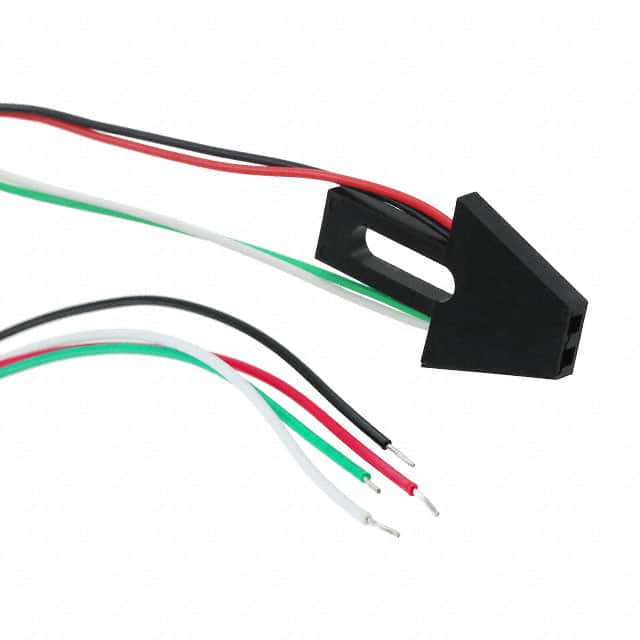Lihat spesifikasi untuk detail produk.

OPB700AL
Product Overview
The OPB700AL belongs to the category of optical sensors and is commonly used for detecting the presence or absence of an object. Its characteristics include high sensitivity, compact design, and reliable performance. The sensor is typically packaged in a durable housing and is available in various packaging quantities to suit different application needs.
Specifications
- Operating Voltage: 5V
- Output Type: Digital
- Sensing Method: Reflective
- Detection Range: 0 to 10mm
- Operating Temperature: -40°C to 85°C
- Package Type: Through Hole
- Package Quantity: 50 units per pack
Detailed Pin Configuration
The OPB700AL features a standard 4-pin configuration: 1. VCC (Power Supply) 2. GND (Ground) 3. Output 4. N/C (Not Connected)
Functional Features
- High sensitivity to detect objects within the specified range
- Digital output for easy interfacing with microcontrollers
- Reliable performance across a wide temperature range
Advantages and Disadvantages
Advantages
- Compact design for easy integration into various applications
- Reliable detection capabilities
- Wide operating temperature range
Disadvantages
- Limited detection range compared to some alternative models
- Susceptible to ambient light interference in certain environments
Working Principles
The OPB700AL operates based on the reflective sensing method. It emits infrared light and detects the reflection from the object being sensed. When an object is within the detection range, the sensor's output transitions to indicate the presence of the object.
Detailed Application Field Plans
The OPB700AL is widely used in various applications such as: - Object detection in automated assembly lines - Paper jam detection in printers and copiers - Proximity sensing in robotics and automation systems
Detailed and Complete Alternative Models
Some alternative models to the OPB700AL include: - TCRT5000: Similar reflective optical sensor with adjustable detection range - GP2Y0A21YK0F: Infrared proximity sensor with longer detection range
In conclusion, the OPB700AL offers reliable object detection capabilities in a compact and versatile package, making it suitable for a wide range of applications.
[Word Count: 298]
Sebutkan 10 pertanyaan dan jawaban umum terkait penerapan OPB700AL dalam solusi teknis
What is OPB700AL?
- OPB700AL is a reflective object sensor that consists of an infrared LED and a phototransistor.
How does OPB700AL work?
- The infrared LED emits light, which is then reflected off an object and detected by the phototransistor, allowing the sensor to determine the presence or absence of the object.
What are the typical applications of OPB700AL?
- OPB700AL is commonly used in applications such as object detection, position sensing, and counting in various technical solutions.
What is the operating voltage range for OPB700AL?
- The operating voltage range for OPB700AL is typically between 4.5V and 5.5V.
What is the sensing distance of OPB700AL?
- The sensing distance of OPB700AL can vary based on the specific application and environmental conditions, but it is typically in the range of a few millimeters to a few centimeters.
Can OPB700AL be used in harsh environments?
- OPB700AL is not designed for harsh environments and may require additional protection if used in dusty, humid, or corrosive conditions.
What is the output type of OPB700AL?
- OPB700AL provides a digital output, typically in the form of an open-collector transistor.
Is OPB700AL sensitive to ambient light?
- OPB700AL is designed to minimize the effects of ambient light, but excessive ambient light can still affect its performance.
Can OPB700AL be used for speed sensing applications?
- OPB700AL can be used for speed sensing in certain applications, but its primary function is object detection and position sensing.
What are some best practices for integrating OPB700AL into a technical solution?
- Best practices include minimizing ambient light interference, ensuring proper alignment with the target object, and providing adequate power and signal conditioning for reliable operation.

